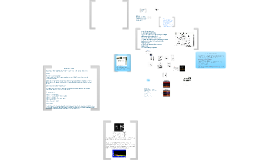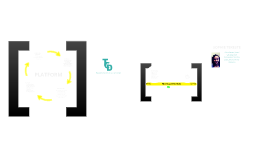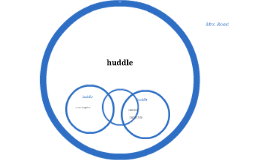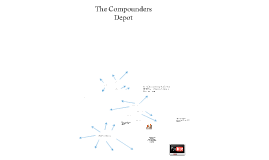TCD
Transcript: Pulsed wave Doppler measurement of blood flow velocity. 2 MHz transducers direct ultrasound wave at the basal blood vessels. Image reveals speed and direction of flow. Use bone windows to insonate: Transtemporal (MCA, ACA, PCA, ACoA, PCoA) Suboccipital (vertebrals, basilar) Transorbital (Ophthalmic, Carotid siphon) Submandibular (ICA) Locating arteries: Depth of the volume. Angle of the transducer. Direction of the blood flow relative to the transducer. Spatial relationship of one doppler signal to another. Traceability of an artery. Transducer remains on window, constant angle for each vessel Constant interface of signal intensity Arterial identification: Adjust angle to obtain proper artery Adjust depth to insonate from distal to proximal (depth measured based on head size) TCD Spectral Waveforms determine velocity at the artery: 1.Mean velocity 2. Pulsatility Index: Peak systolic-end diastolic ----------------------------------------- mean velocity After calculation: Compare velocity to norms to determine stenosis/spasm. Compare spectral waveforms from anterior and posterior circulations, left and right. Note any disease of extracranial carotid and vertebral arteries which may impact values. Note pulsatility index. Consider physiologic factors. Artery Mean velocity (cm/sec) MCA 62 ± 12 ACA 50 ± 11 T-ICA 39 ± 9 PCA 30 ± 10 Ophth 21 ± 5 Siphon 47 ±14 Vertebral 38 ± 10 Basilar 41 ± 10 ICA-sub 37 ± 9 Physiologic Factors AGE : lower velocities with increasing age H&H : hematocrit less than 30 increases velocity Hypoglycemia: increases bloodflow to increase delivery of glucose to brain, only a factor with glucose below 40 Hyperventilation: decreases velocity Hypoventilation: increases velocity Gender: Females have 3-5% increase in MCA velocity Fever: velocity increases by 10% for every degree of increase in temperature Heart rate: sweep speed has to be accomodated for bradycardia or tachycardia.) Normal TCD Criteria: 1. Normal Flow direction 2. Velocity/pulsatility symmetry (Left:Right difference is less than 30%) 3. Velocity hierarchy is respected. 4. Pulsatility Index is 0.6-1.1 in normotensive patients. (can be>1.2 in patients with hypertension) 5. Note any microemboli, shunt (if applicable) 6. Vasoreactivity response Microemboli detection: assessment of stroke risk or antiplatelet therapy. Emboli detection device 1. Doppler microembolic signals are transient; generally lasting less than 300 msec. Embolic signal duration depends on the time of passage through the Doppler sample volume, random throughout cardiac cycle.. 2. Microembolic signal amplitude is usually at least three decibels higher than that of the background blood flow signal. 3. Microembolic signals are unidirectional within the Doppler velocity spectrum 4. A microembolic signal audibly sounds like a snap, chirp, or moan BUBBLE STUDY Detects a right to left shunt via PFO or a pulmonary AVM. Protocol 1. Patient in the supine position. 2. Place an IV line in the antecubital vein using a 21-gauge needle on a butterfly with a plastic tube extension to a 3-way stopcock. 3. Monitor the bilateral middle cerebral arteries (MCA) using a headframe and two 2 MHz TCD probes fixated on the bilateral transtemporal window. ( MCA flow is toward the probe and monitored at a depth of 50 to 55 mm. 4. Record a five minute baseline. 5. Attach an empty 10mL syringe to the 3-way stopcock. 6. Fill a second 1OmL syringe with 9 mL of bacteriostatic saline and 1 mL of air. Place the second syringe on the 3-way stopcock. 7. Agitate the saline between the two syringes and when it becomes a frothy white color inject the saline as a bolus. 8. As soon as the bolus is finished, watch and listen for microembolic signals to pass through the MCA waveforms. 9. Wait another five minutes and repeat the protocol, this time having the patient perform a Valsalva maneuver just at the bolus is finished. The patient should hold the maneuver for ten seconds. Bubble Study Interpretation As the bolus is finished, listen for microembolic signals. Any amount of bubbles seen and heard within either MCA is suggestive of a right to left shunt. . The grading scale is as follows: Grade I 1 to 10 microembolic signals Grade II 11 to 30 microembolic signals Grade III 31 to 100 microembolic signals Grade IV 101 to 300 microembolic signals Grade V greater than 300 microembolic signals, many uncountable Vasoreactivity study: Assessment of Collateralization Vasomotor reserve is the ability of the cerebral vessels to maintain adequate blood perfusion in the brain regardless of changes in pressure gradients, body position, or blood pressure. This perfusion is maintained through vessel dilation and constriction. If this perfusion mechanism is abnormal, the patient has an elevated risk for stroke. This can be tested by breath holding induced vasodilation. Alternatively it can be tested by CO2 challenge. The breath-holding maneuver (TCD breath-holding test): 1. Normal breathing of room air for approximately 4

















